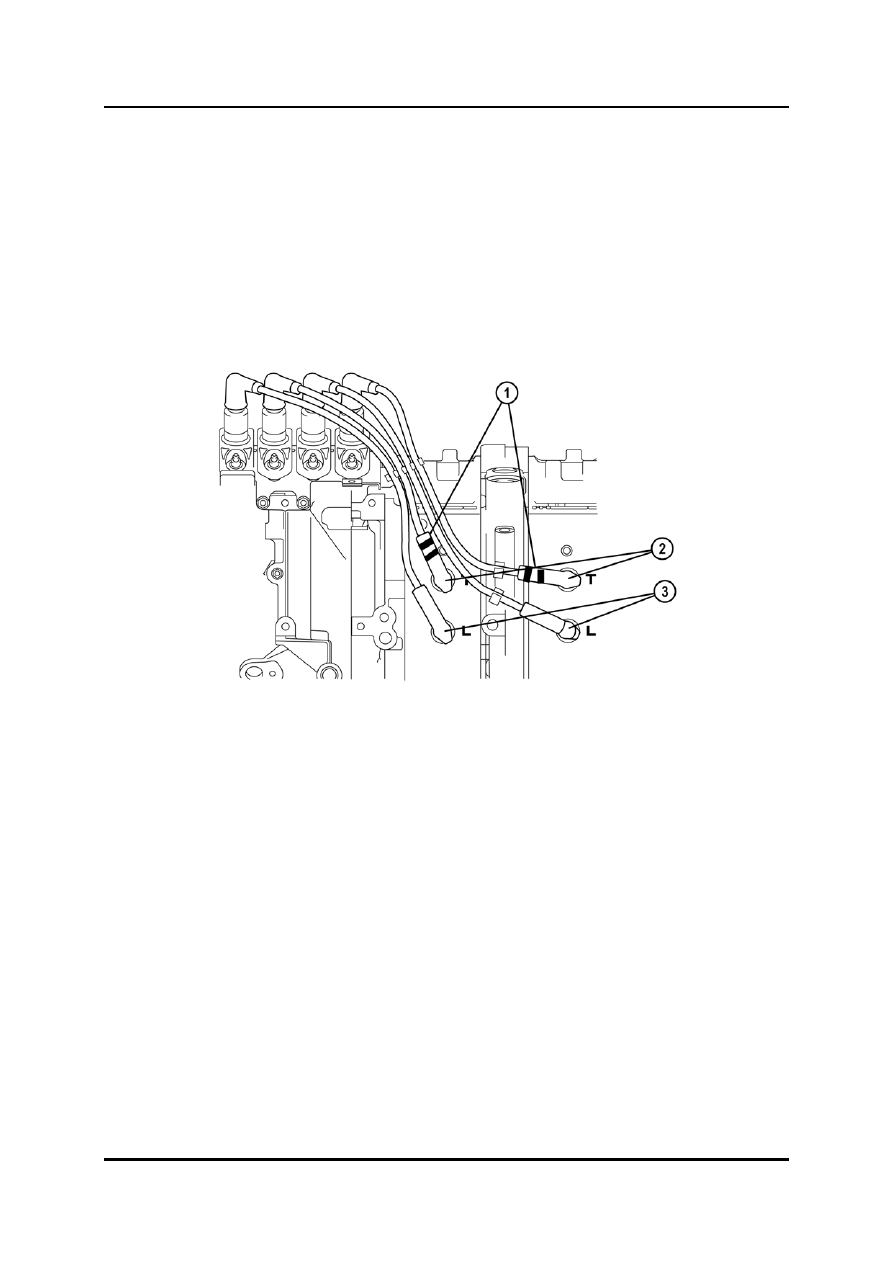Mazda Training manual - part 16

Powertrain Engines
•
Due to the large bathub shaped combustion chambers the rotary engine is equipped with
two spark plugs per rotor housing, improving combustion efficiency and exhaust
emissions
NOTE: Two different spark plugs (leading and trailing) with different lengths are mounted in
each rotor housing. If a wrong spark plug is used the engine may be damaged (e.g. a
spark plug which is too long may contact the rotor).
•
The high tension leads for the trailing spark plugs are marked with blue and green tape
to prevent incorrect installation.
L1001.4_01137
1
Blue and green tape
3
Leading spark plugs
2
Trailing spark plugs
Curriculum Training
01-51